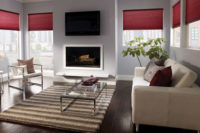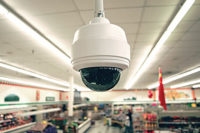Once within the budget of only the wealthiest homeowners, lighting control now is finding its way into the mainstream.
While there are only about one million North American “luxury” homes valued at $1 million or more, there are seven to 10 million homes valued between $500,000 and $1 million, observes David Weinstein, vice president of residential sales for Coopersford, Pa.-based light control manufacturer Lutron Electronics. Weinstein calls this the “mid-market,” adding that “the revolution or evolution is in the mid-market.”
If they do things right, security dealers offering lighting control can earn extra recurring monthly revenue and enhance customer loyalty.
How to get it right? Experts in this area shared their advice.
Understand why the customer is buying. There are several types of buyers for lighting control systems, comments Derek Cowburn, CEO of Indianapolis-based manufacturer Lumen Cache. “They’re looking for energy savings, convenience, or beautiful style, or they’re looking at maintenance.” He notes, for example, that a commercial buyer is likely to have two-story ceilings and therefore will be interested in hearing about a system that requires very little maintenance.
Establish relationships with builders and architects. The decision to install a lighting control system often is made at the time a customer is building a new house. By establishing a relationship with a builder, dealers can learn about new opportunities. And as David Drab — product manager for Sarasota, Fla.-based manufacturer Clare Controls — notes, homeowners may be able to bundle the cost of the lighting control system into their mortgage, thereby minimizing their initial expense.
Many home buyers work with architects — who may be particularly receptive to the idea of lighting control because they believe it makes a room more attractive, notes Richard Biocca, co-owner of Tucson, Ariz.-based dealer Area 51 Audio Engineering & Consulting. A single wall fixture may be able to replace multiple conventional light switches — and a relationship with a single architect could lead to sales to multiple homeowners.
Have a lighting designer and electrical contractor on staff or develop relationships with them. Security companies sometimes struggle with lighting control because they rarely deal with interior design, comments Cowburn. “They need a relationship with a lighting designer,” he advises. Dealers also could benefit from becoming familiar with tables used by lighting designers to determine the minimum lumen output for an area, Cowburn says.
It’s also important to recognize that generally only licensed electricians are allowed to do certain portions of a lighting control system, including wiring lights into walls or ceilings.
Emphasize the security benefits of lighting control.Tony Stewart, who is a lighting designer and consultant as well as president of Greer, S.C.-based Stewart Electronics, cites research showing that security applications are the number one lighting control application sought by system buyers. At a minimum, dealers should include an outside floodlight that should be set up to turn on when a separate motion detector senses a car driving up to the house, advises Stewart. Other home automation events such as sounding a chime or illuminating certain indoor lights also can be triggered at the same time.
Recommend button engraving options for the customer prior to installation. Many lighting controls have buttons designed to be engraved to match individual installations. But customers often are reluctant to commit to a specific selection or just don’t have time to consider the issue.
Salespeople for Chicago-based dealer TVTI get customers to commit up front by recommending engraving options for them and by explaining that it only costs a few dollars if a button needs to be replaced, notes TVTI President and CEO David Welles. And with the engraved buttons in place from the start, customers should have a better experience with the system.
Don’t complicate an installation. While lighting control systems can be very powerful, many customers are seeking simplicity. TVTI generally steers customers toward a consistent configuration, notes Welles. In that configuration, the top button turns all the lights on. The bottom button controls window shades if included or if not, it turns all lights off. “Other buttons do individual lights,” Welles explains, adding that TVTI generally plans only one “scene” option per room.
Understand the different wireless options. Wireless lighting control systems typically use either Z-Wave or Zigbee technology. With Z-Wave, “every product is certified to work with every other,” explains Avi Rosenthal, vice president of security and control for Las Vegas-based manufacturer Nortek Security & Control. “That’s not the case when it comes to Zigbee. It’s a bit more proprietary.”
While Z-Wave operates at 900 MHz, Zigbee uses the 2.4 GHz frequency, Rosenthal explains. The 2.4 GHz frequency is more crowded than the 900 MHz band, but 2.4 GHz transmissions can be made at higher power, he explains.
Dealers should pay extra attention to construction materials when installing Z-Wave, advises Rob Puric, director of connected home for Melville, N.Y.-based manufacturer Honeywell Security Products Americas. “Wood frame is best,” explains Puric. “However, conducting proper range testing is critical in assuring the controller and devices are communicating properly within homes of various construction types.”
Make a plan to return to visit a customer 30 days after installation. This is a practice that Rosenthal advises. “Nobody moving into a house or experiencing lighting control for the first time knows what he wants to do,” he observes. Dealers should build the cost of a return visit into the initial quote because “you’re going to get the phone call anyway,” he says. The dealer often should be able to sell additional devices for the system because when customers anticipate the return visit, their “mind and imagination” start to work, Rosenthal says.
With the right equipment and support, dealers can ensure that customers have a positive experience with their lighting control systems. That’s important to the customer’s total experience with the dealer. Satisfied lighting control customers are more engaged customers — and are more likely to remain long-term customers for lighting control and other offerings.
SIDEBAR: DIY Threat?
The advent of smartphone control paved the way for a range of new do-it-yourself security and home control offerings, including some aimed at eliminating professional installation and/or monitoring. Dealers disagree about how great of a threat these offerings pose.
“Don’t worry about it,” advises David Welles of TVTI. Welles argues that some people will install their own systems, but others would rather pay someone else to handle that task — and that won’t change much.
Fritz Werder, vice president and general manager for NuVo/On-Q at West Hartford, Conn.-based manufacturer Legrand North America, advises dealers to “sell their strengths” and the advantages of integrating lighting control with other systems. In positioning themselves against the DIY option, dealers “need to leverage their professional knowledge, their experience, their ability to tailor lighting control solutions to the user’s lifestyle, and their ability to tie multiple home products into one automated system,” comments Werder.
David Weinstein at Lutron Electronics notes that there also may be an opportunity to serve those homeowners who purchase a DIY system but find they are unable to install it. “The trade needs to be very supportive and come to reasonable rescue,” he advises.










